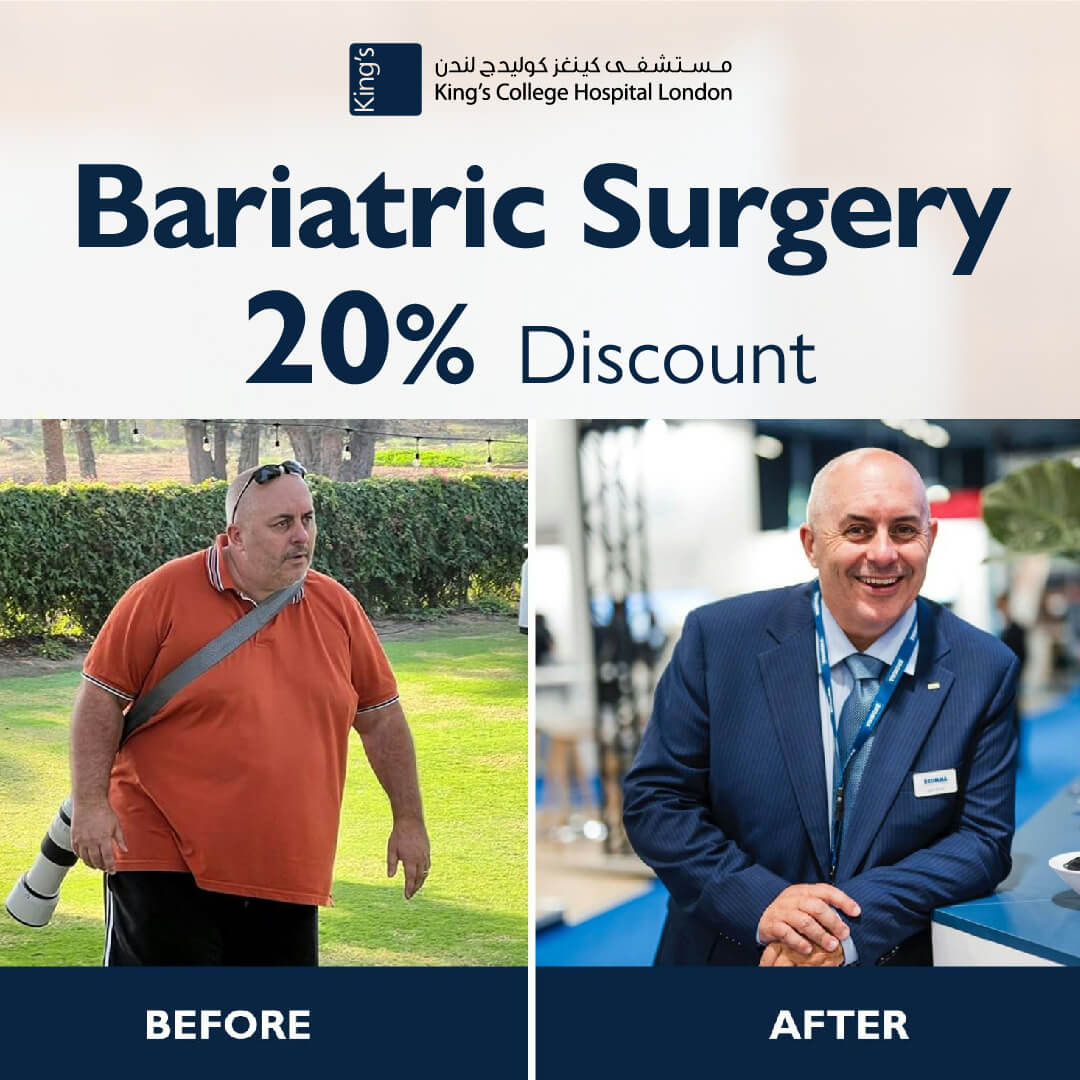What Is an Endoscopic Sleeve Gastroplasty?
The Endoscopic Sleeve Gastroplasty is a type of weight-loss procedure in which the stomach size is reduced by using an endoscopic suturing device, without the need for surgery or removal of part of your stomach. This procedure is recommended if you are overweight and other methods of weight loss such as dieting and exercise have been unsuccessful.
At King’s we offer the Endoscopic Sleeve Gastroplasty procedure as part of our Weight Loss & Bariatric Programme, whereby you have the option of continuous support for 6 months post surgery, to ensure you have the best opportunity to reach your weight loss goals.

THIS NON-SURGICAL PROCEDURE IS DELIVERED BY OUR EXPERT UK & US TRAINED GASTROENTEROLOGISTS
Why Is the Surgery Done?
Being overweight brings along a large list of related health problems. Endoscopic Sleeve Gastroplasty is performed to help you lose weight and to reduce the impact of those conditions.
Who Is the Surgery Recommended For?
Endoscopic Sleeve Gastroplasty is mostly recommended for people who are clinically diagnosed as obese, but your doctor might decide if the procedure is beneficial for you or not. The following conditions are normally required to qualify for the procedure:
- BMI above 30.
- No eating disorder history.
- Blood sugar under control.
- No history of stomach ulcers.
- Have attempted weight-loss through diet and exercise without success.
For select candidates, the ESG procedure can be done even if a previous weight loss surgery has been performed.
Benefits and Potential Results
Endoscopic sleeve gastroplasty can lead to significant weight loss, depending on how much you change your lifestyle habits. Recent studies have shown that depending on BMI some patients lose approximately 17Kg in the first six months. Also, the following conditions can be improved:
- Diabetes
- Hypertension
- Hyperlipidemia
- Heart diseases
- Sleep apnea
- Osteoarticular diseases
Risks
Early studies have shown a favorable safety profile. Usually, patients experience pain and nausea that can be managed and disappear after 2-3 days.
Before Surgery
In order to be selected as a valid candidate for the procedure, your doctor might require some lab tests and also, will recommend a high-protein and low-carbohydrate diet some days before. The night before, you are not allowed to consume any food or liquid after midnight.
During Surgery
Endoscopic sleeve gastroplasty is a non-invasive procedure that can be done using an endoscope, a flexible tube with a camera, and a suturing device. The procedure involves the following steps:
- The endoscope passes through your mouth into your stomach.
- There will be placed some sutures in your stomach, in order to restructure it into a tube shape, reducing the stomach size.
- After the procedure, you will be monitored closely for any complication.
As a result, you will feel full sooner, restricting the number of calories your body absorbs. General anesthesia is required and the whole procedure will take about half an hour.
After Surgery
Immediately after the procedure, you won’t be allowed to eat or drink for about 8 hours. After that, a liquid diet will be required for two weeks. Around week four, you will be allowed to move into semi-solid foods, and eventually to your regular healthy diet. Most people go home within the same day and it takes about 1-3 days to fully recover at home and return to work.
Should you have any further inquiries or require additional information, please feel free to reach out to our team at 0566855872

Faqs
الأسئلة الأكثر شيوعا
Endoscopic sleeve gastroplasty is a popular weight loss surgery technique that shrinks the size of your stomach without cutting into it or requiring incisions. An endoscope is inserted via your mouth and into your stomach while under general anesthesia. A suturing tool that is attached to the endoscope is used to sew tiny stitches into the stomach to shorten and shrink it. The newly created stomach will have a tube-like structure and, resemble a gastric sleeve in size.
Endoscopic sleeve gastric procedure is used to assist individuals in losing weight and reduces their chance of developing major weight-related illnesses such as sleep apnea, type 2 diabetes, heart diseases, fatty liver, high levels of triglycerides, high blood pressure, and osteoarthritis, among others.
Patients with a BMI of more than 30 who have tried unsuccessfully to sustain weight loss with medication and lifestyle changes and who are between the ages of 20 and 60 years are recommended for ESG. An exemption from ESG will be made if you are unable to adhere to dietary recommendations post-procedure, are undergoing antiplatelet therapy, have inflammatory bowel disease, had gastric surgery, or have acute respiratory or cardiac conditions.
To date, ESG has a very good safety record, and significant problems are quite uncommon. This does not imply that there are no hazards associated with the operation, though. Prevalent symptoms that usually go away within a few days include slight abdominal pain, vomiting, heartburn, and nausea. Pulmonary embolism, gastroesophageal junction constriction, stomach leaks, and pneumothorax are some possible but unlikely significant side effects that could occur following the treatment.
It’s crucial that you gradually increase your calorie intake so that the sutures have time to heal. For roughly three weeks, you will be expected to follow a liquid-only diet before switching to puree foods, and then finally to soft meals such as mashed potatoes. Fortunately, this technique severely suppresses appetite. Four weeks after the treatment, you should be ready to resume your regular diet, however, your quantity will be substantially lower than previously.
For this kind of treatment, dissolvable sutures would be insufficiently strong. The internal sutures will maintain your stomach in its new sleeve-like shape after the ESG treatment until it has healed. There are no side effects associated with the tiny, thin sutures that are used.
ЗАПИСАТЬСЯ НА ПРИЕМ
